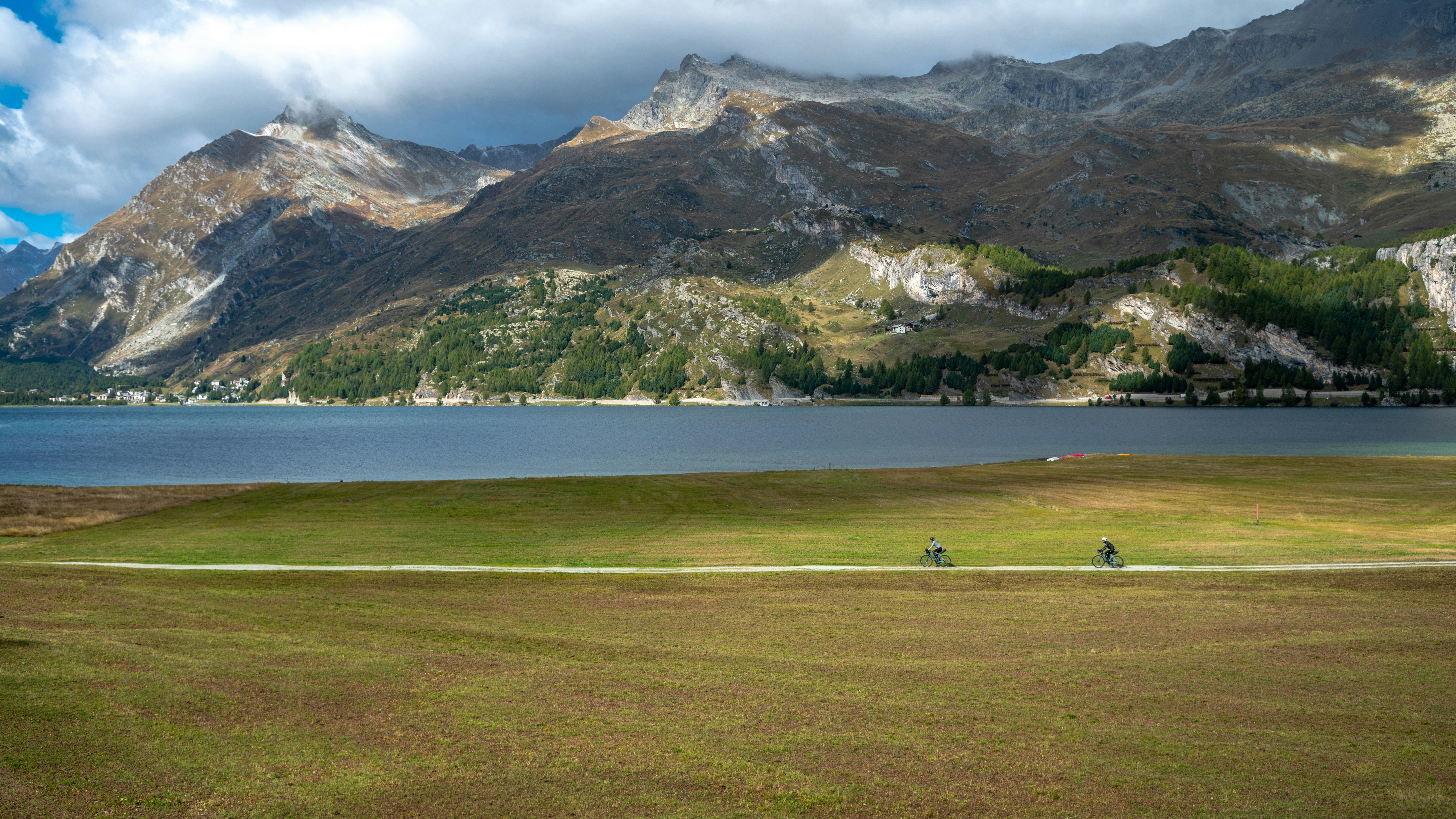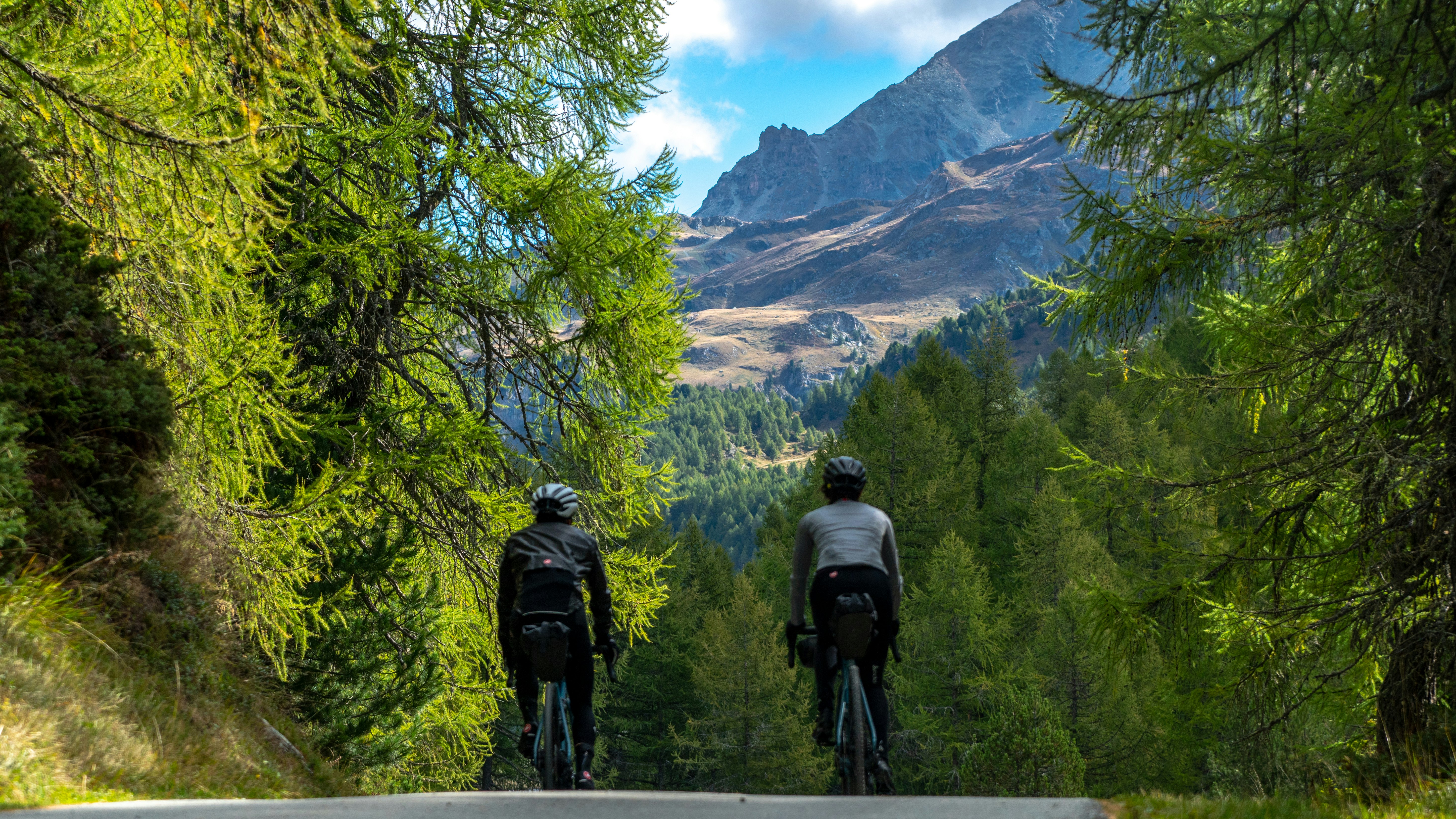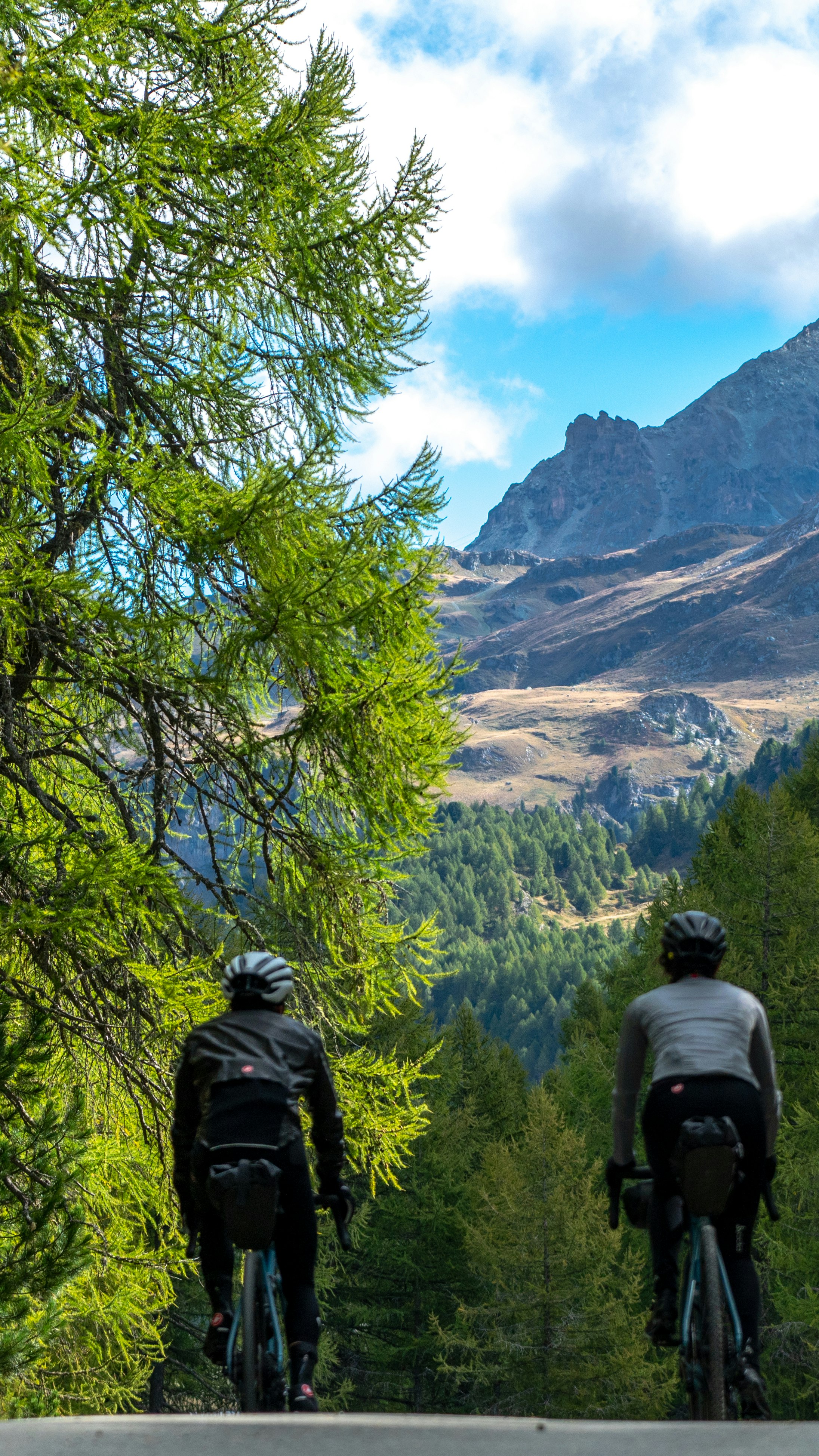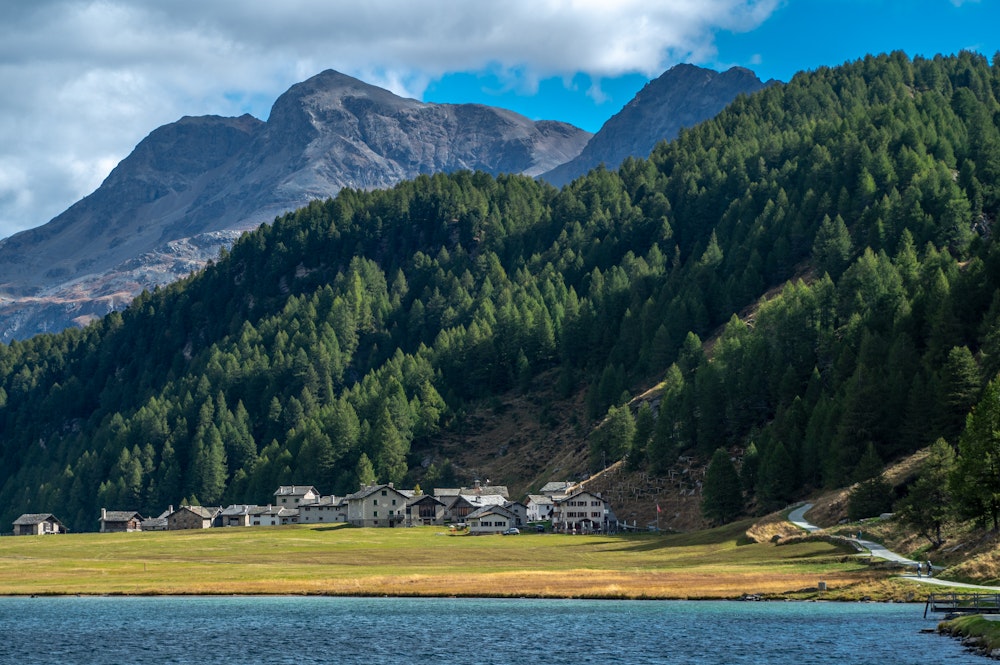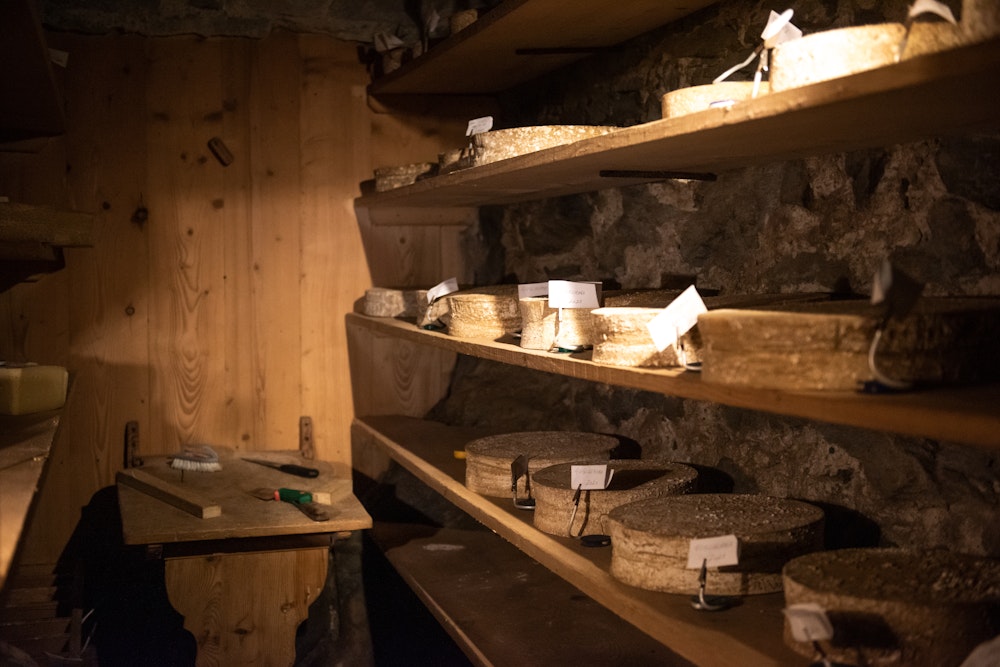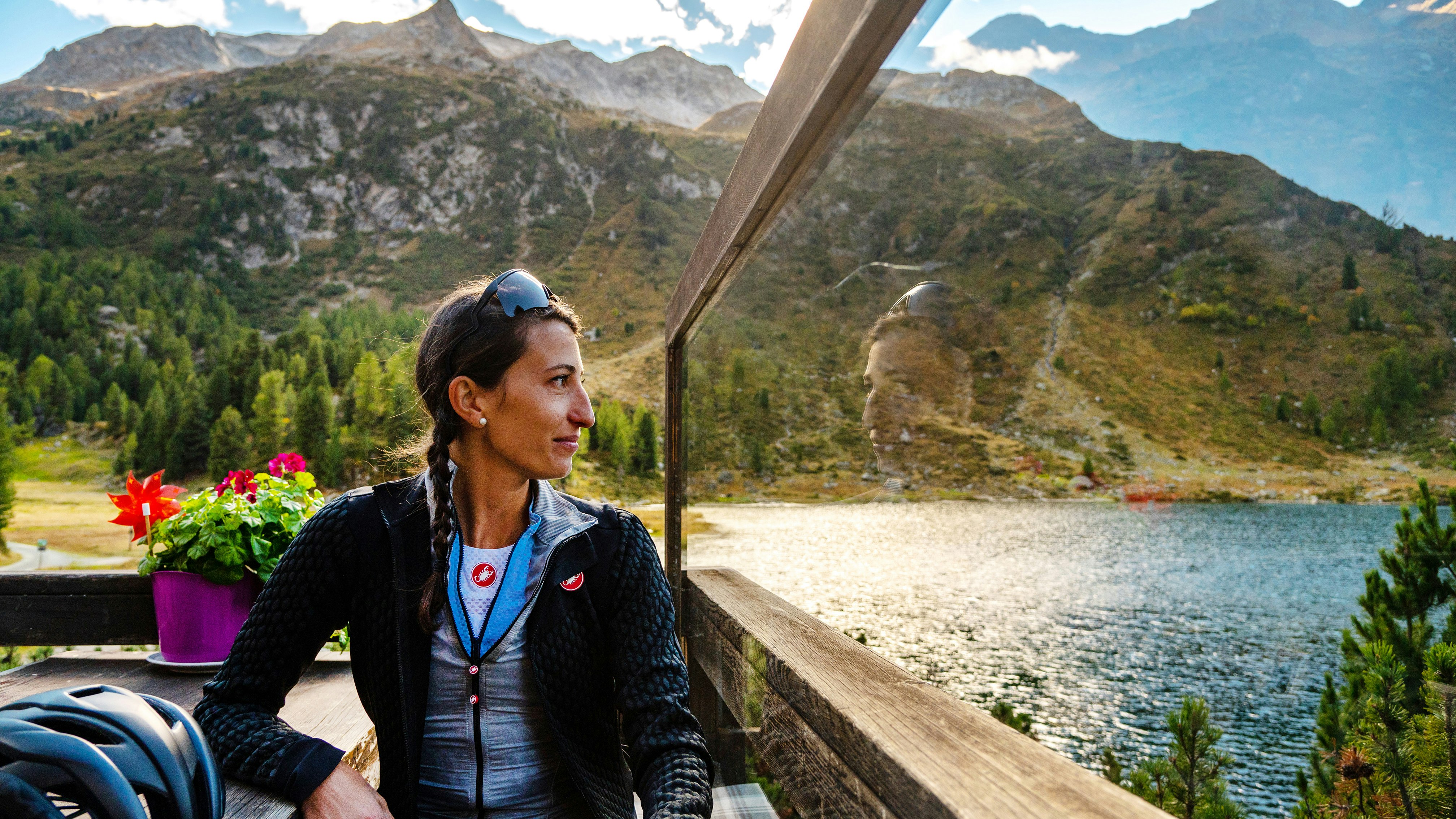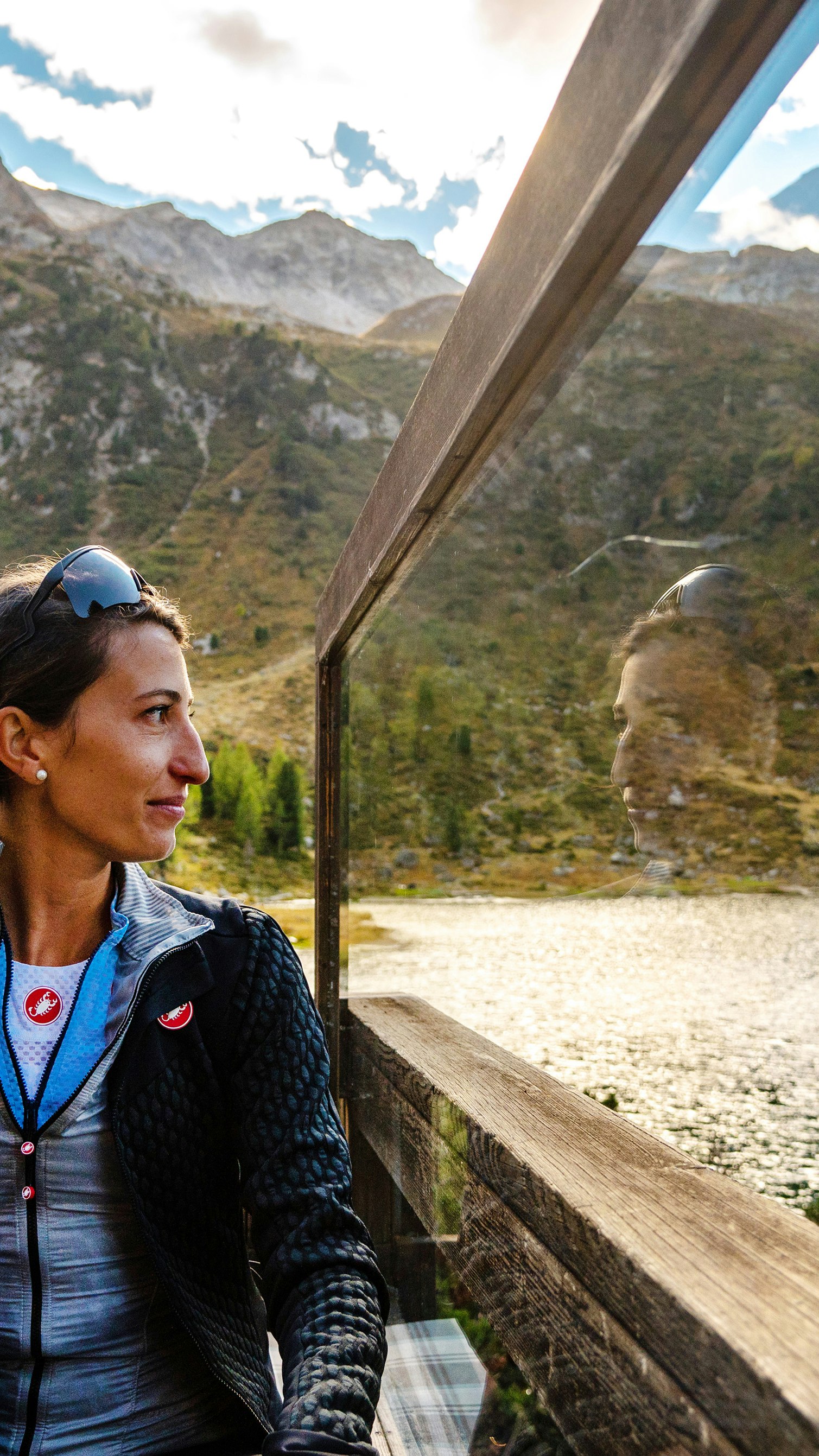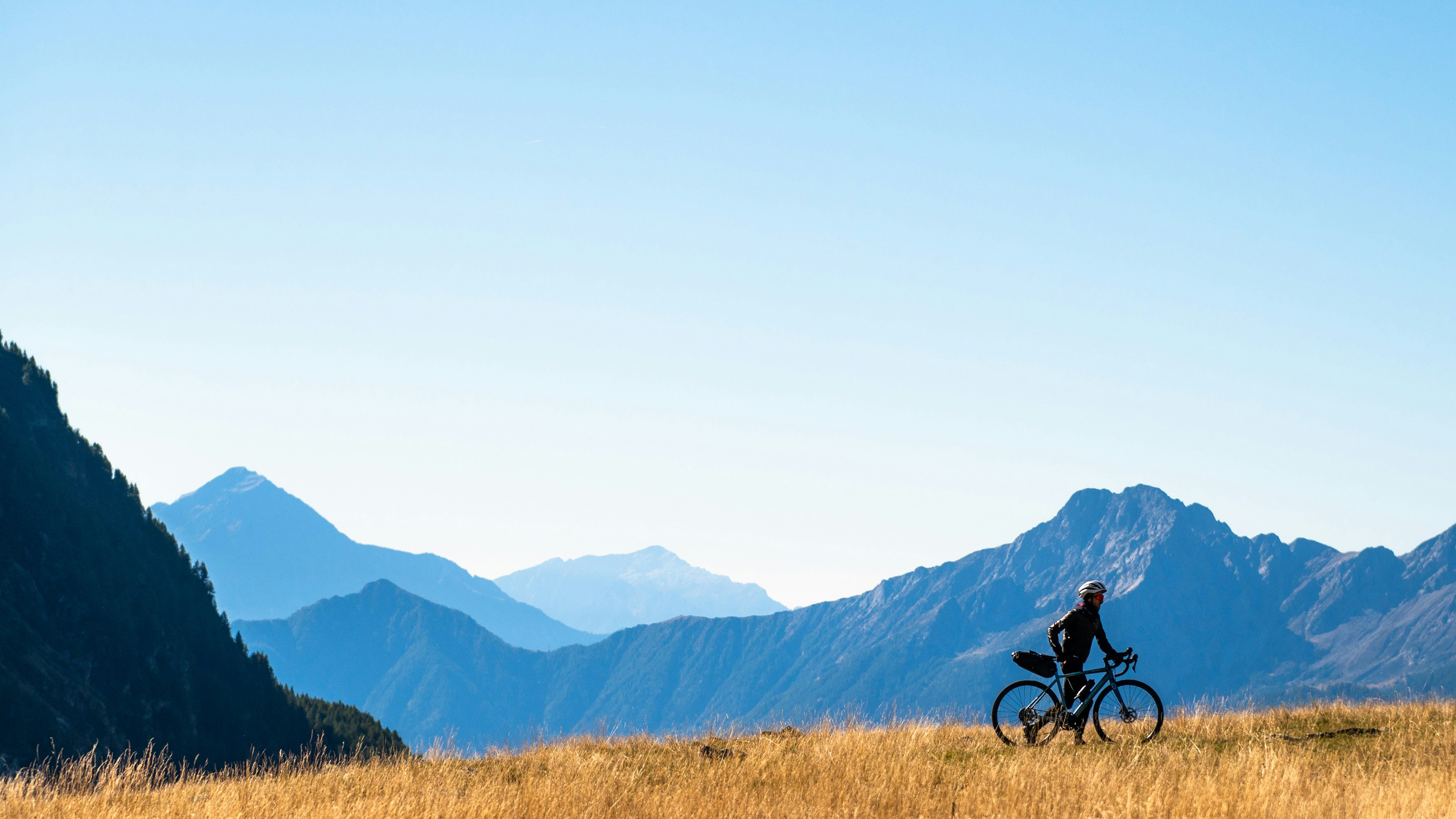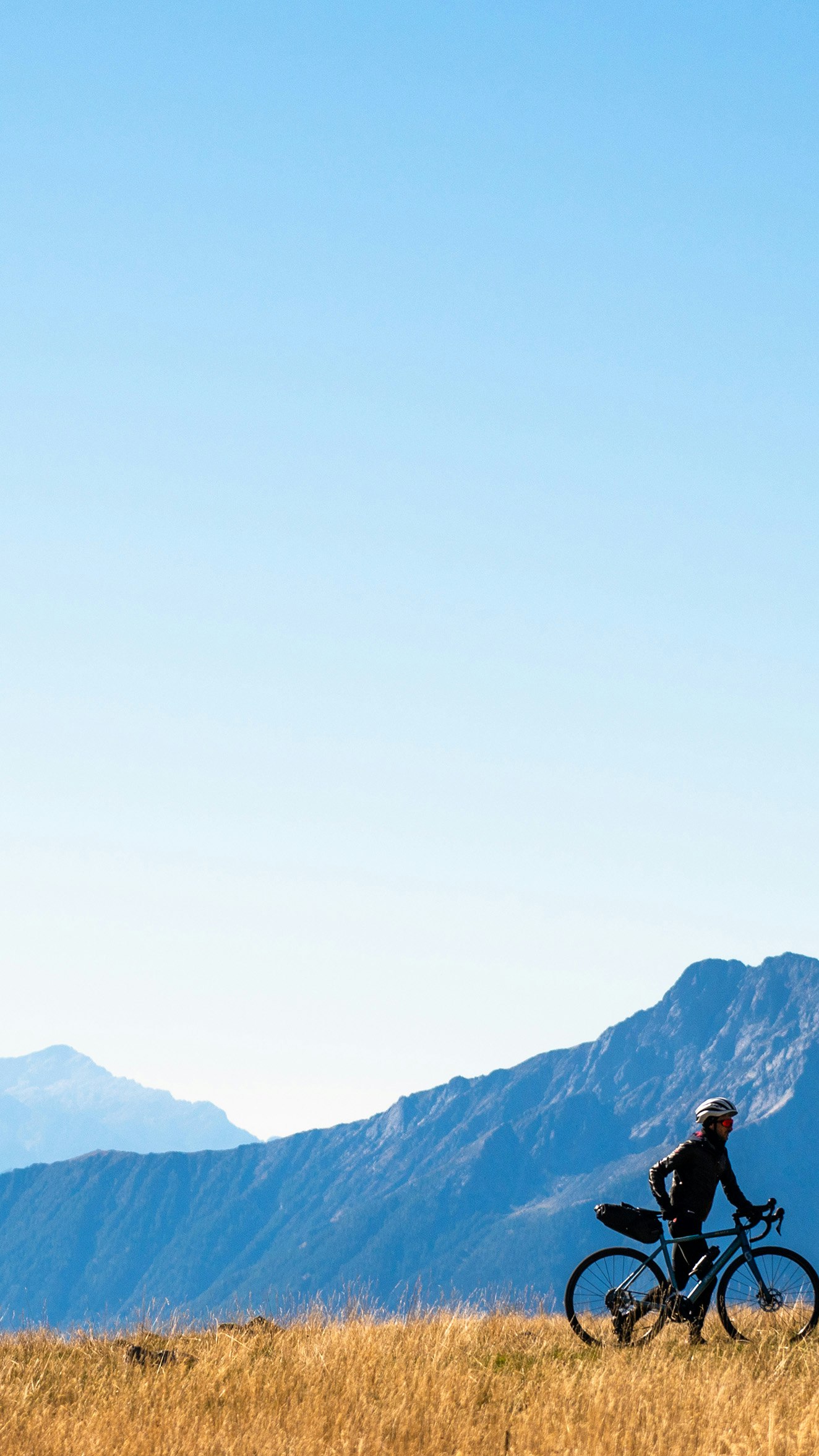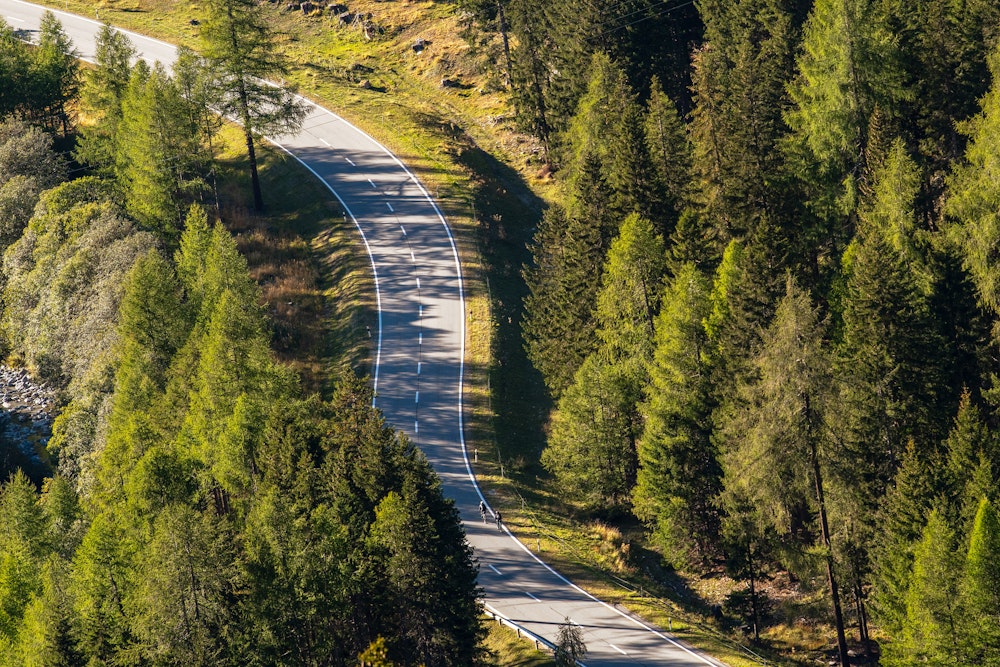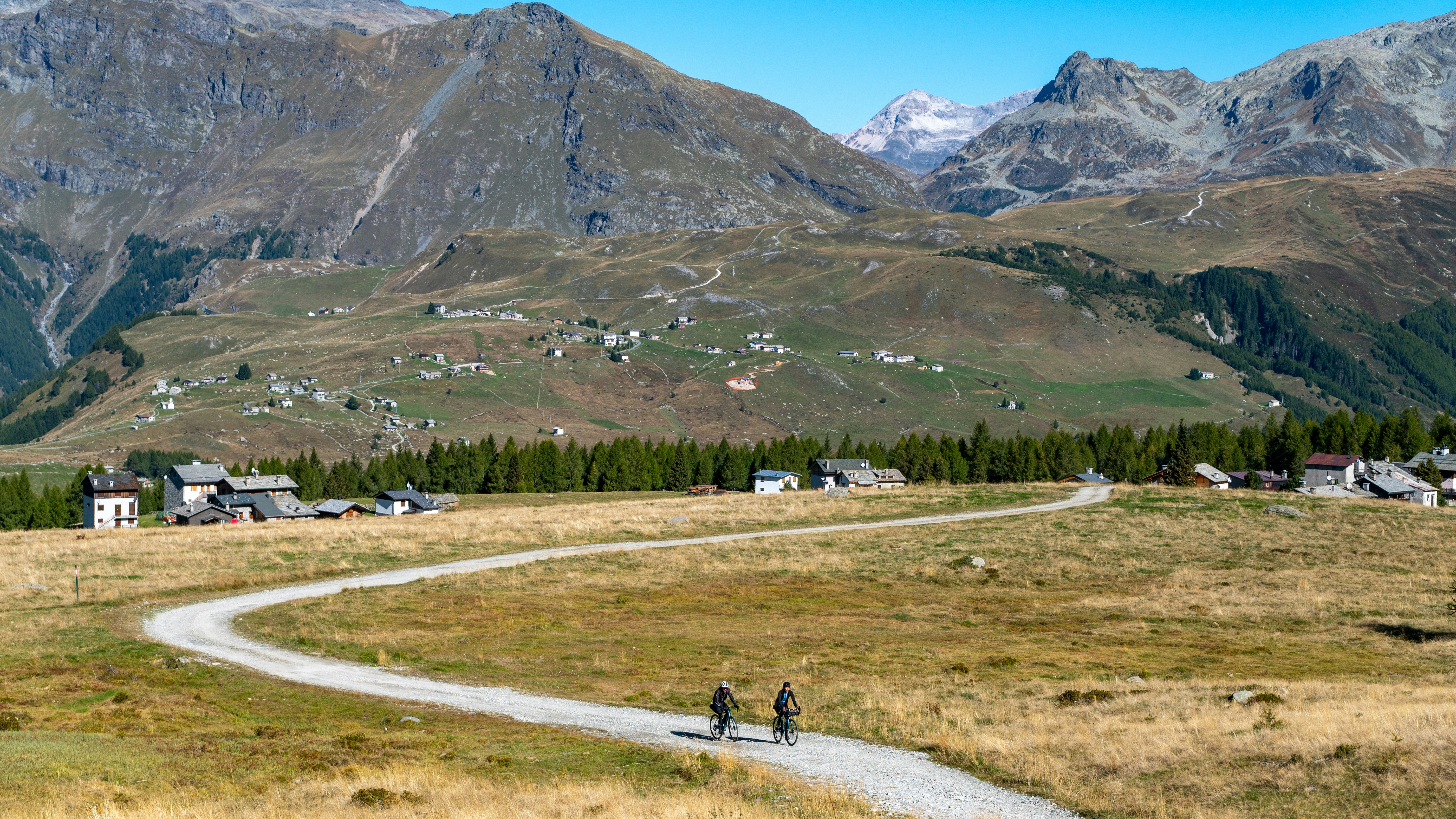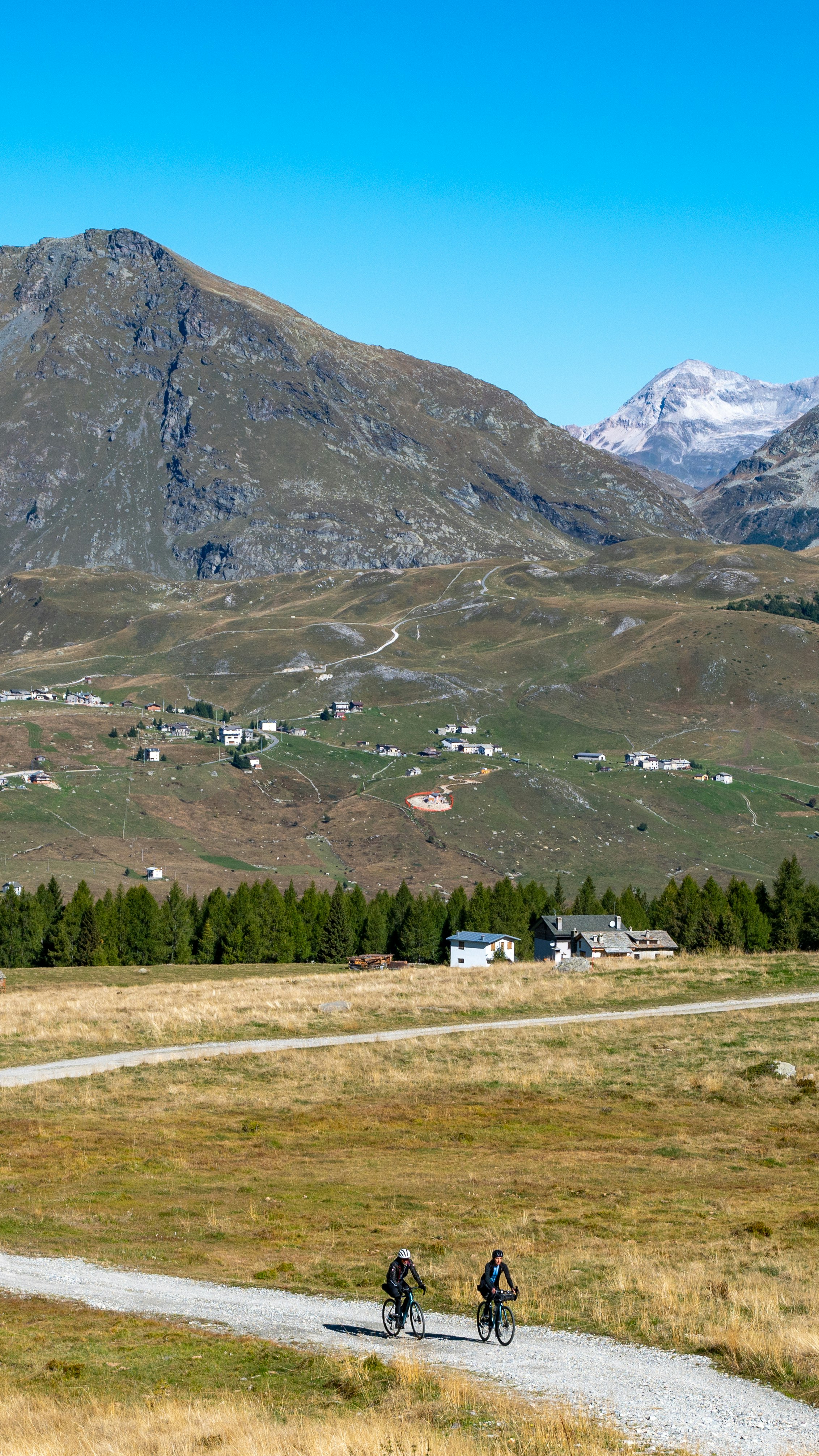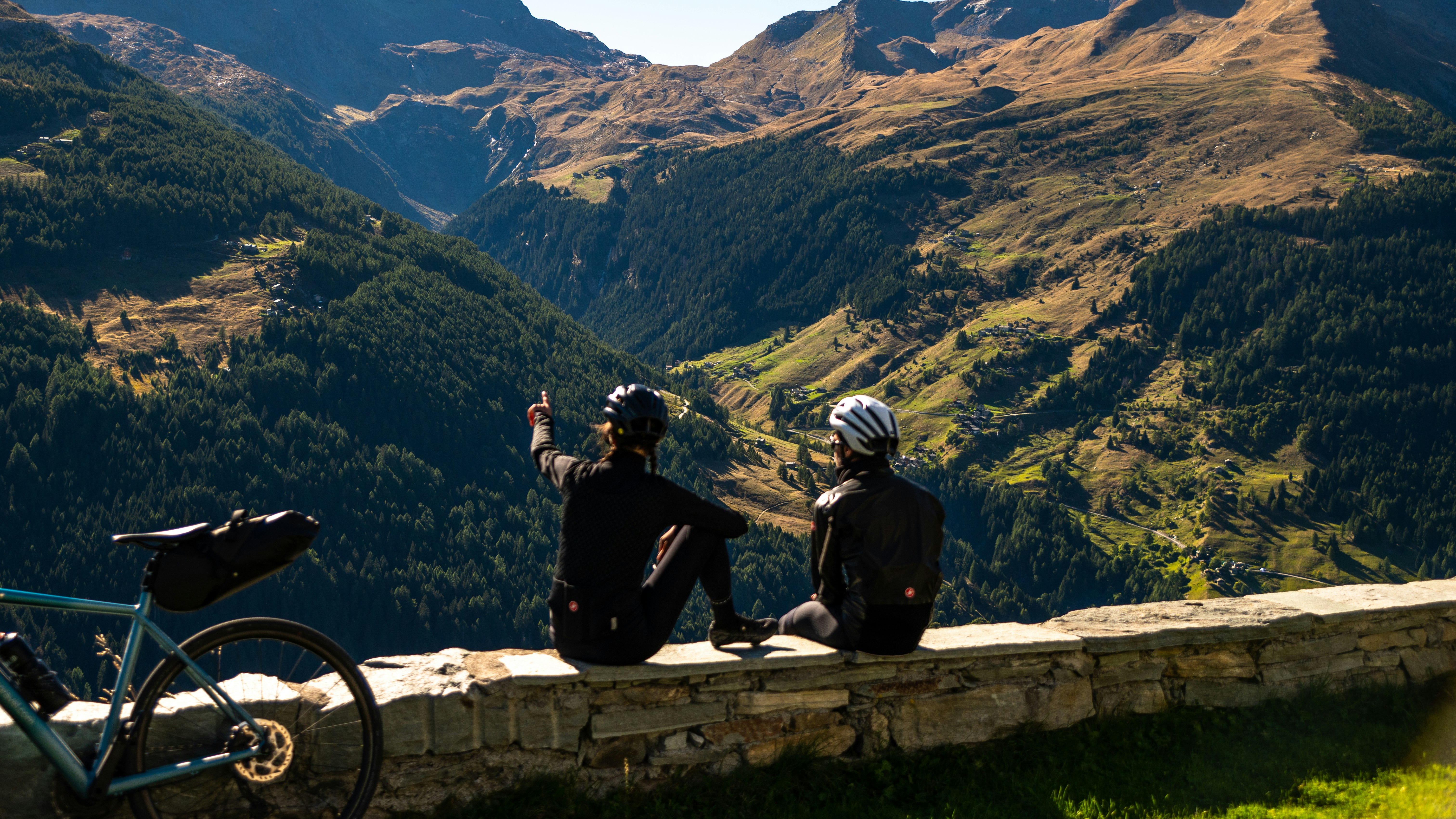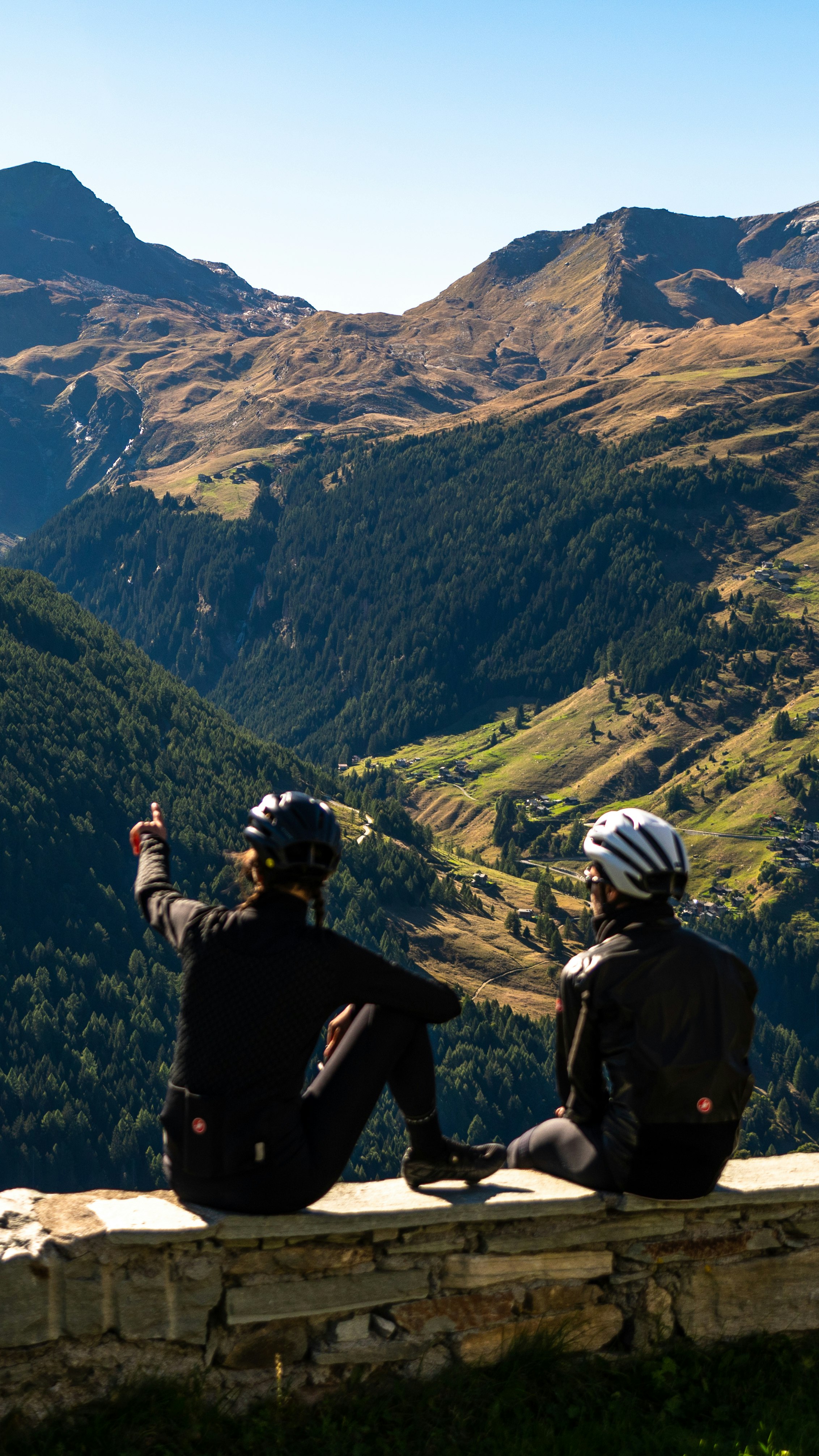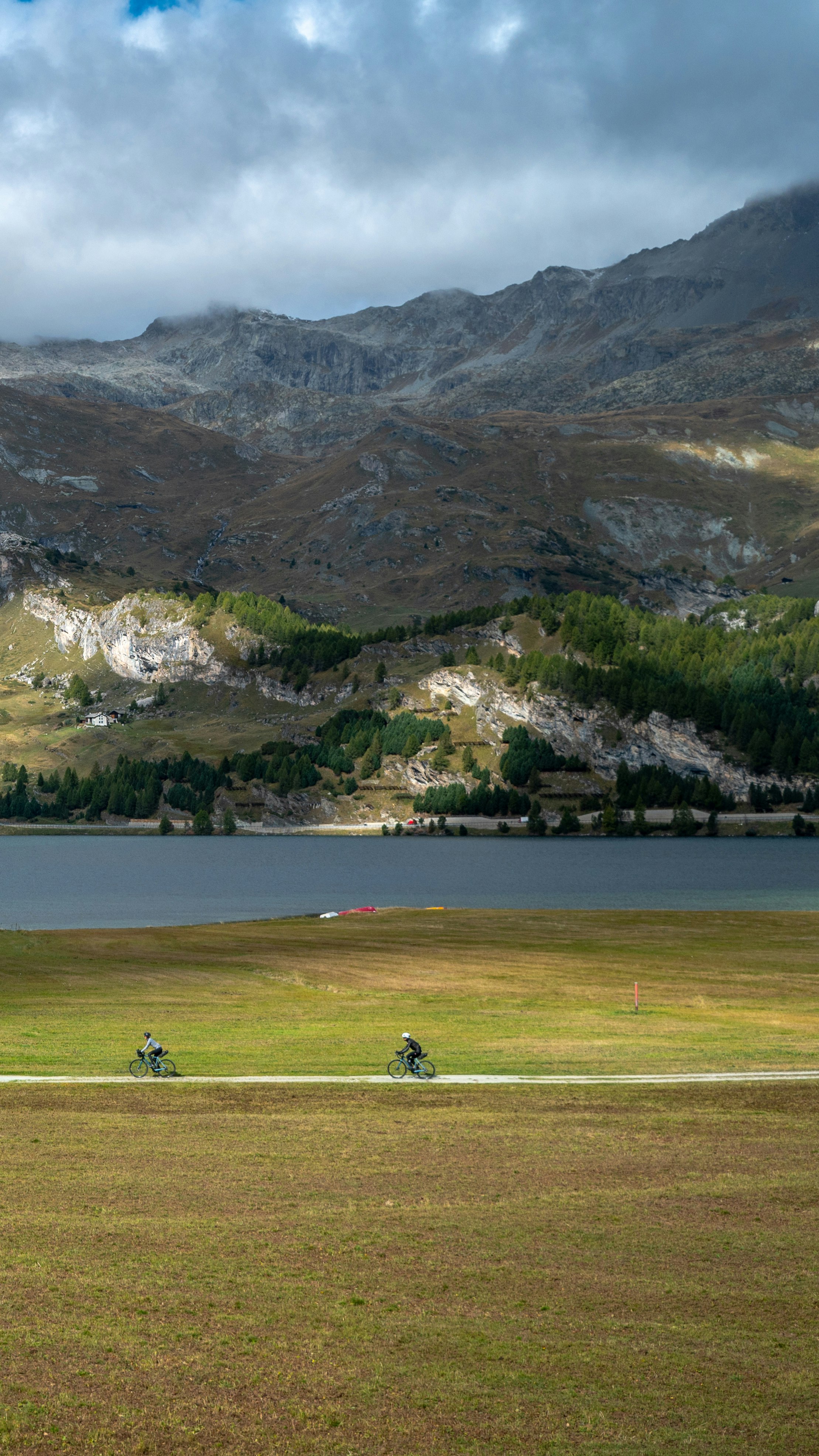
With your head in the clouds
Making a base in Chiavenna to explore the Bregaglia and Spluga valleys.
Elevation difference
4.699 m
Total Length
189 km
Duration
2 Days
C
With your head in the clouds
00
Intro
01
Risalendo la val Bregaglia fino al Maloja e oltre
02
Alpe Motta and Montespluga
Lying on the banks of the Mera river (the view from the bridge is not to be missed), Chiavenna is the natural entrance to two valleys of rare beauty: the Bregaglia valley and the Spluga valley, which we will travel along via two separate routes, with Chiavenna as our base. These two landscapes are in close proximity, yet feel very different. The Bregaglia valley, gentle and elegant; the Spluga valley, rugged and wild.
We all know it — cycling often leads to having one’s head in the clouds. And for these two days, we will almost literally have our heads in the heavens. They will be two demanding, beautiful and emotionally charged days. The first stage takes us from Chiavenna to Sils Maria, in Swiss territory: 100 kilometres with about 2,000 metres of altitude gain. The second, tougher and with more elevation, will take us to Alpe Motta — a stage finish of the 2021 Giro — and the village of Montespluga with its famous dam: only 90 kilometres in total, but with about 3,000 metres of ascent. Bike: gravel. So as not to miss anything these places have to offer.
The evening before our departure we had dinner just outside Chiavenna, in a typical crotto. The owner entertained us at length, explaining the origin and history of these caves carved into the rock. Crotti are in fact nothing more than small natural cavities on the slopes of the mountain. Inside, the sorel always blows a burr of cool air capable of maintaining the internal temperature, even in high summer, between eight and nine degrees. In other words, a constant natural refrigerator.
Since ancient times, the inhabitants of the area realised the extraordinary potential of these caves for the preservation of local food and wine delicacies. First and foremost, cured meats like the brisaola (spelled and pronounced with an “i” in these parts, as opposed to the Valtellina bresaola which also differs in taste), cheeses and finally, ça va sans dire, wine. Today, many crotti have turned into osterie and restaurants — some of them very sought-after — and celebrate feast day every year at the beginning of September.
But now is the time to get on the bike. We set off early in the morning from the centre of Chiavenna, heading in the direction of the Maloja pass.
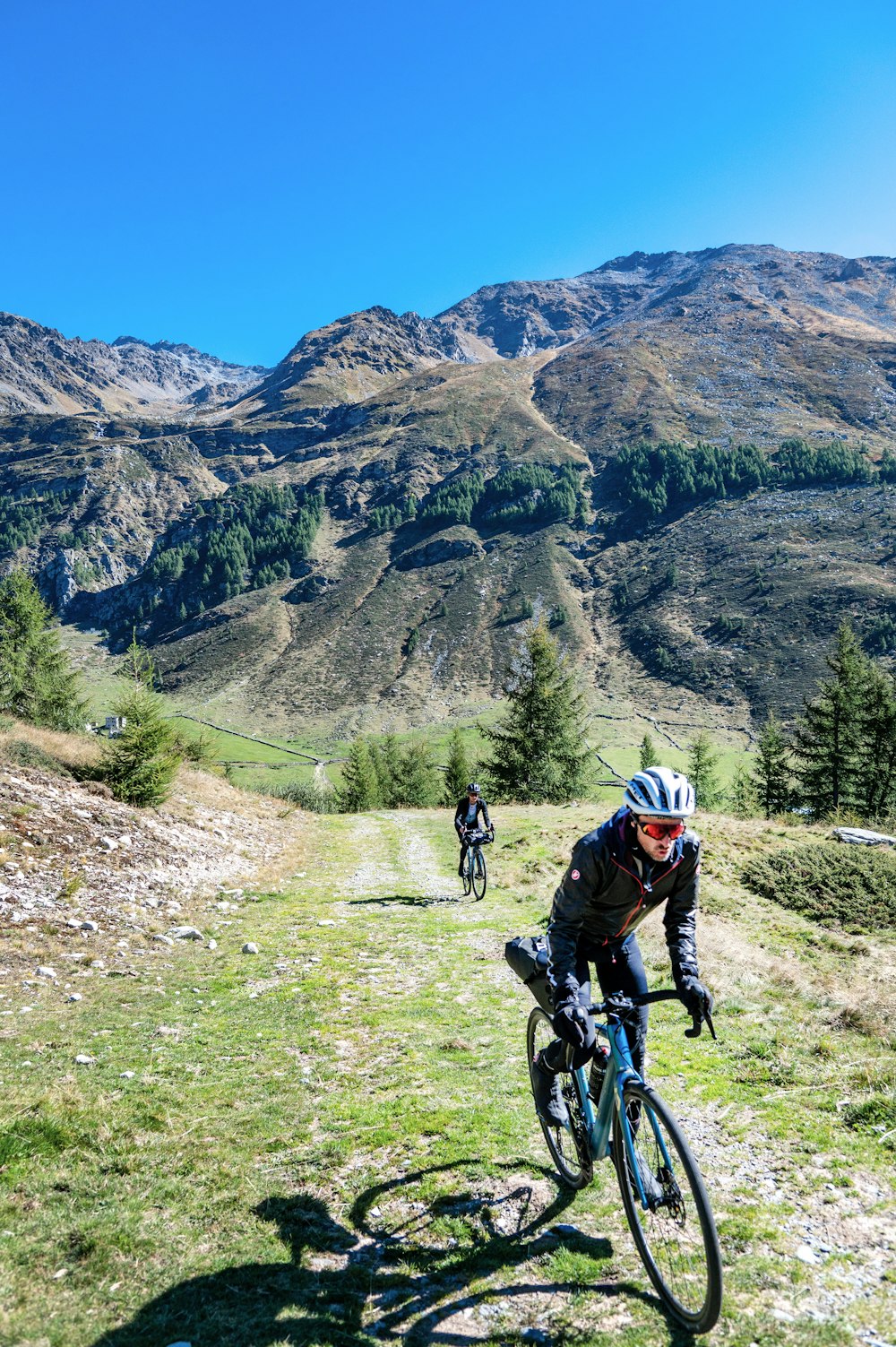
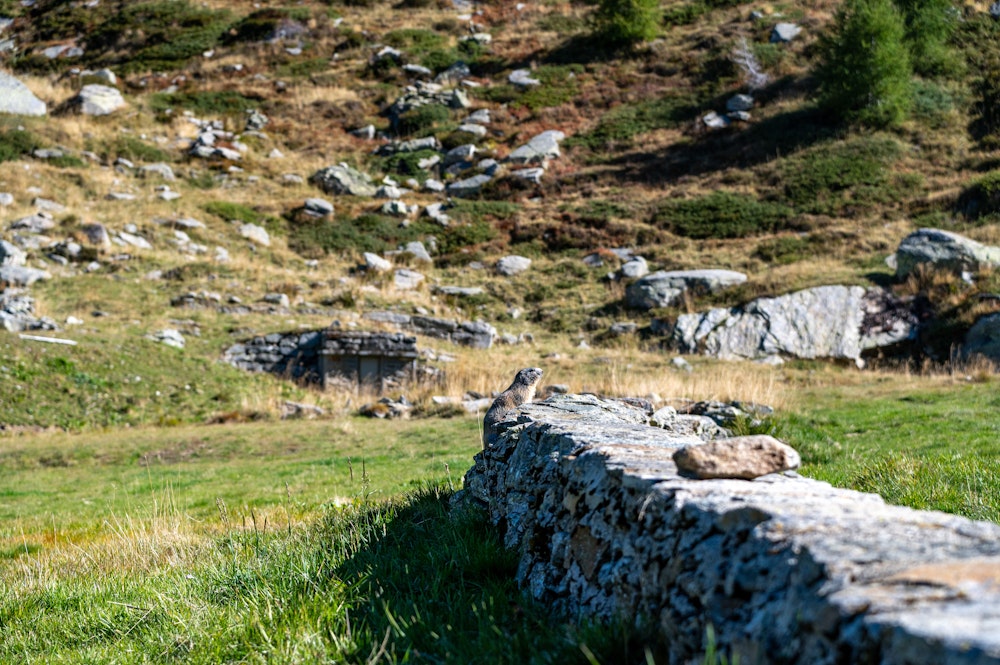
In fact, we have to climb the entire Val Bregaglia, with its 32 unbroken kilometres and 1,500 metres of altitude gain.
Crisp air, long sleeves and light gloves. We take the unpaved cantonal road up the valley, running alongside the SS 37. After Prosto we begin to ascend. The path runs, with a few exceptions, on the left bank of the Mera. The gradients become more challenging as you begin the climb proper, still on the left bank of the stream. After Promontogno and Vicosoprano, we approach the pass and face the first severe switchbacks.
Upon reaching the Maloja pass we overlook the Upper Engadin, furrowed by the Inn River, one of the most important watercourses in central Europe. Its source at Lake Lunghin is located at the meeting point of a triple watershed. To the east, the waters of the Inn flow into the Danube after 517 kilometres, and from there head to the Black Sea. To the north, the catchment area of the Rhine extends into the North Sea, and to the south, via the Mera, the waters of Lake Como and the Adda, the catchment area of the Po takes shape, flowing into the Adriatic sea.
Leaving the pass, we indulge in a diversion on a gravel road. It is steep, and leads up to the Lägh da Cavloc, a natural paradise embraced by forest at 1,900 metres above sea level. There is a small hut with a terrace overlooking the emerald-green water. Close by there’s a shop selling delicious cheese and other local produce. If you want - and if you have space - by all means try it.
Along the same route, we return to the village of Maloja and then along a forest road to Isola, the last hamlet in the municipality of Bregaglia. From here we take a challenging section of single track that runs along the lake of Sils on its right bank. Some care must be taken: this is a real trail, marked with signs, and there are numerous hikers en route.
Here, the gravel bike need be in in good order. Treaded, wide-profile tyres are essential for dealing with the uneven surface filled with roots and protruding rocks. The arrival in Sils Maria has something solemn and enchanting about it.
Friedrich Nietzsche, the famous German philosopher, had reason to choose this place for his holidays. In this small, discreet and elegant group of houses that lie on the “white” waters of the lake, one seems to enter into a trance. It enraptures those who live there and even those who, like ourselves, encounter it only in passing. In some way, one feels transported back in time. It invites a kind of meditation, an exercise in introspection which is, unsurprisingly, almost philosophical. Surrounded by fir trees, rocks and paths, far from the traffic and chaos of urban life, cycling here is a priceless tonic.
After a short lunch break, we take the cycle path — asphalted this time — to Val Fex, another place where time (and indeed our hearts) seems to stand still.
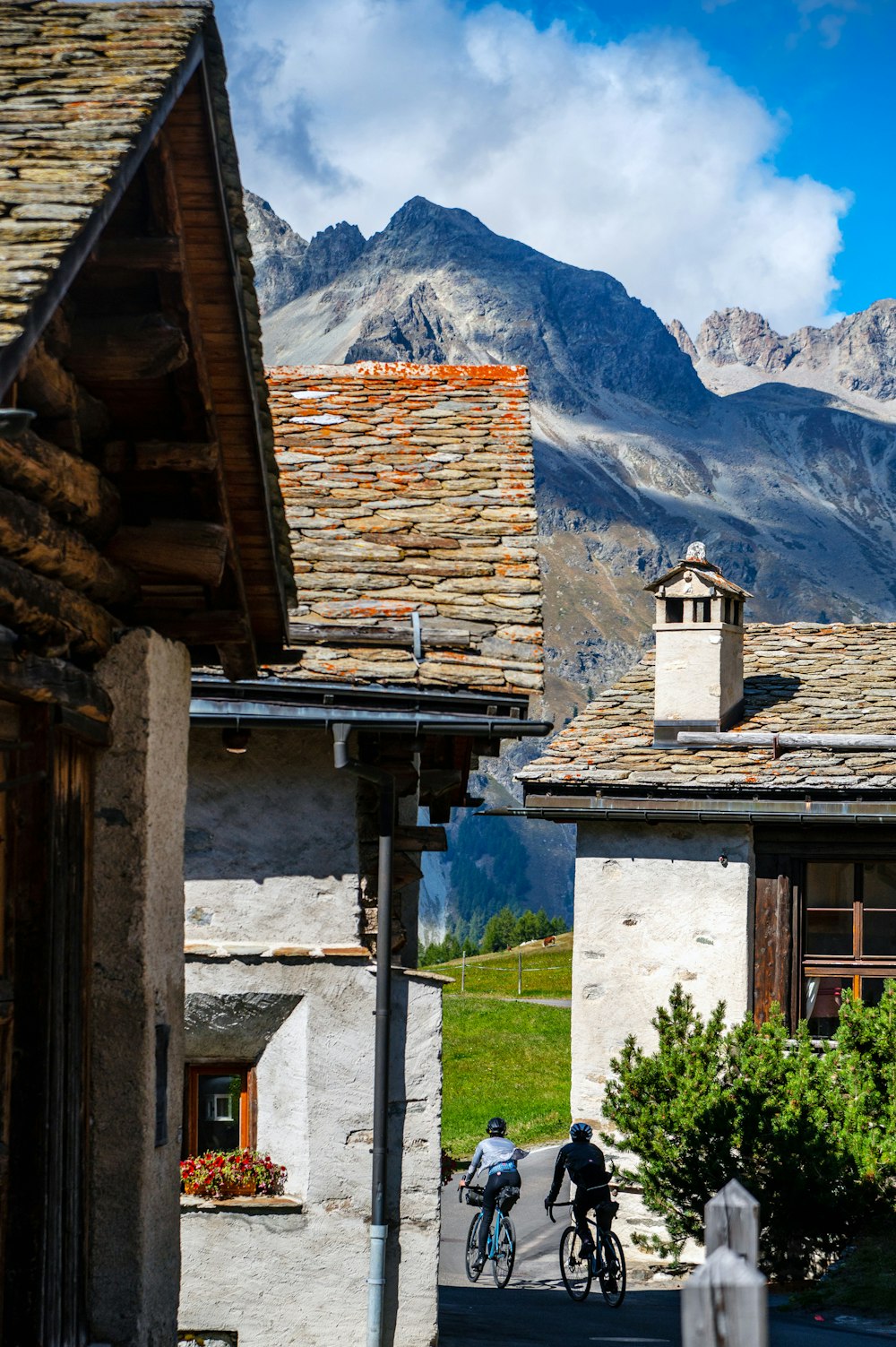
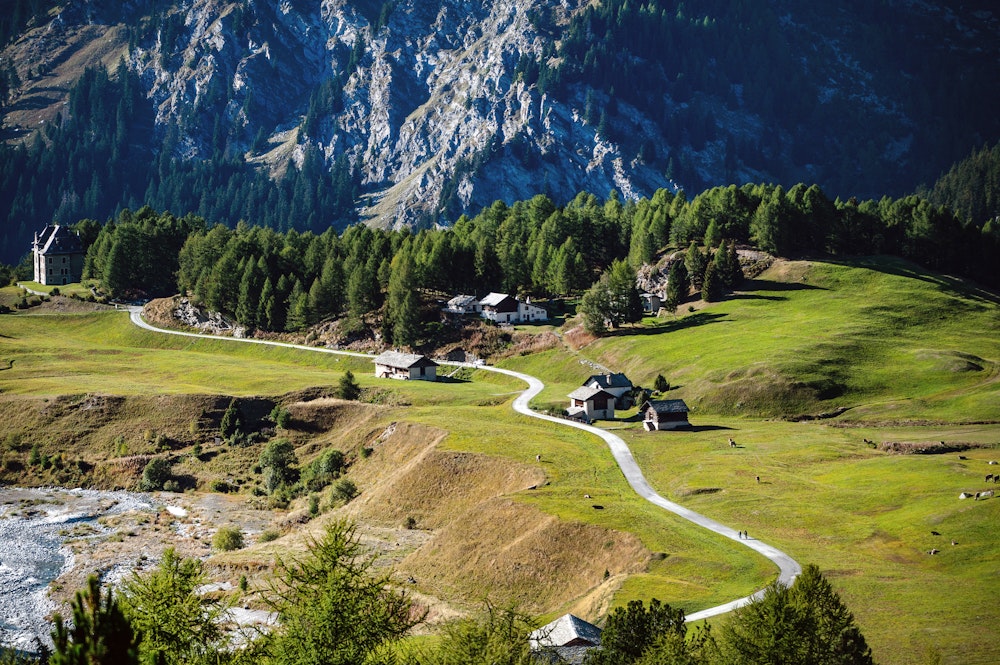
This is the mountain scenery that inspired numerous paintings by the artist Giovanni Segantini, who lived the last five years of his young life in Maloja. He died at only 41 years of age and asked to be buried in the village’s small mountain cemetery.
Insofar as we can, we try to capture and convey these emotions. We share the photos on Instagram in the hope that the memory remains. We then proceed back to Lake Sils and Maloja, and from there along the same route as the outward journey to Chiavenna. The downhill bends, the drawing sweeping curves, this becomes pure pleasure. But in the thrill of the descent, don’t miss the passage under the sassi che si baciano — the kissing stones, the two rocks between Stampa and Promontogno that seem to kiss, forming an arch above the road.
Finally, a hot shower. Dinner awaits at the hotel, and tomorrow we’ll ride with our noses tilted upwards. There will be more climbing, new gravel roads and new detours to discover. Meanwhile, my Garmin shows 99.6 kilometres and 2,230 metres of altitude difference for the day.
The following morning, we have to set the alarm clock even earlier. A longer route awaits us with more challenging gradients, but the day is beautiful: cold, even colder than yesterday, but with a clear sky rarely seen. The profile of the mountains seems to jolt against the sapphire blue background of the sky.
From Chiavenna we climb the parallel Spluga valley, separated from the Bregaglia valley by a ridge of mountains. Prominent among them is the Monte Mater massif. At its foot a small glacier gives rise to a stream, whose waters feed a vast alpine region through a network of conduits. But climate change is putting a strain on the water resources even in this area, especially this summer.
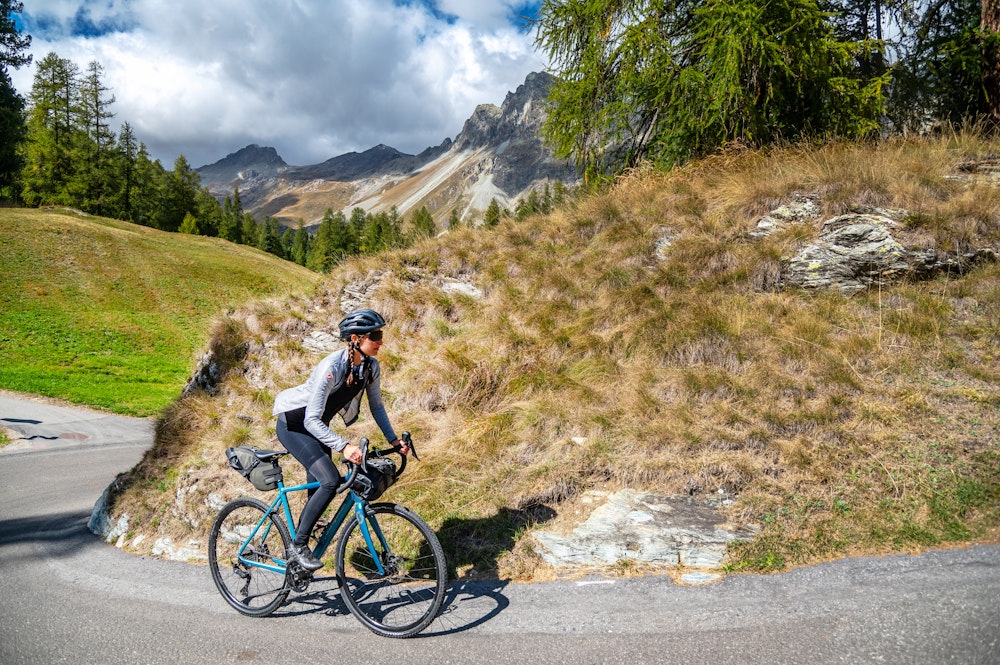
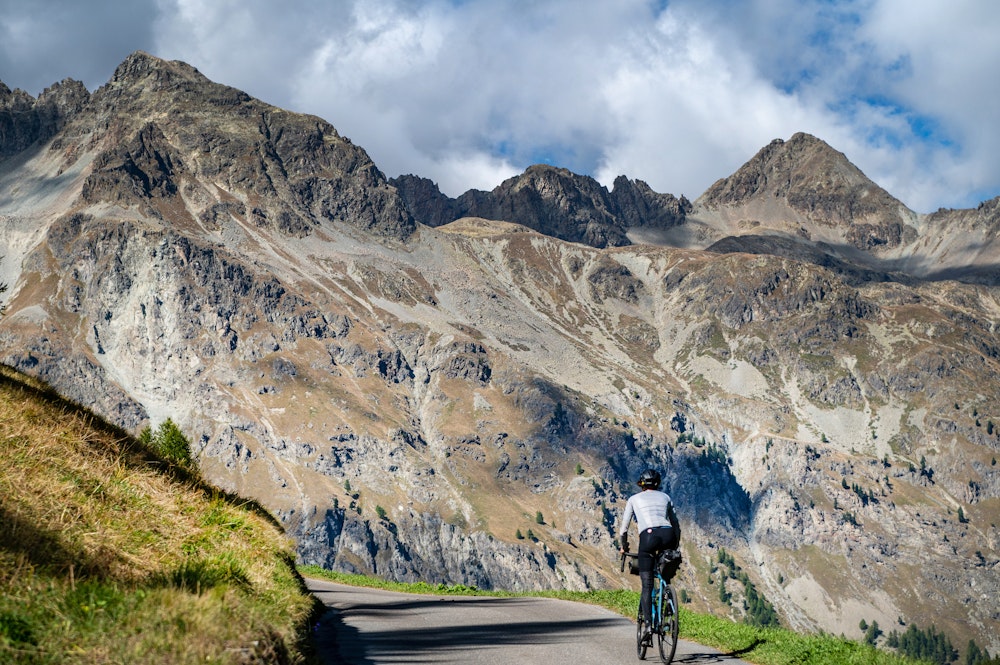
We pass through Campodolcino and then reach Madesimo, at an altitude of 1,555 metres. The sun has risen and the temperatures have become milder. The plateau on which the well-known Alta Valle Spluga ski resort stands is populated by hundreds of cows. In the off-season, there are far more of them than there are residents. We ride among them, trying not to disturb the animals too much, but not to fall over ourselves either. There are beautiful creatures of all breeds: spotted, black or red. A cheesemaker later tells us that their milk is used to make the highly prized Bitto cheese — but only if they graze above 1,600 metres.
The milk, however, must be freshly milked, the cheesemaker repeats, punctuating the syllables well. It must have a temperature of 32° C. And above all, it must be transported immediately without ever dropping below 28°C , to be processed by the cheesemaker according to his art.
Shortly after entering Madesimo, we take a paved diversion to our left: this is the one that climbs to Alpe Motta.
We will only cover the last five kilometres of the stage, but they are also the toughest. Double-digit gradients with stretches at 15% — we grit our teeth, and thanks to our gravel bike ratios, we reach the GPM without swearing too much. At the summit of 1,725 metres we continue a little further along a mule track, which with a sharp bend bisects the pastures lit by the high sun. We stop in a clearing, just above the statue of an all-gold Madonna: this is the Vergine delle Vette (Virgin of the Peaks), also known as Nostra Signora d’Europa (Our Lady of Europe). From here you can contemplate almost all of the Spluga valley. A view that, on a day as beautiful as this, becomes a fairytale panorama.
We descend to Madesimo along the steep asphalt road, hands low on the handlebars and fingers ready to pinch the brakes.
The time has come to return off-road. We take a sharply pitched dirt road to the left — stones, rocks and streams alternate with short paved sections. We soon discover that we are still in the middle of a large pasture. Once more - and with no little finesse - we slalom our gravel bikes between one cow and another to reach the Andossi plateau, where in an alpine hut the cheesemaker we mentioned earlier is waiting for us. It is here that he lives and works every day. He tells us a thousand stories about his business, and talks with great pride about an important collaboration with Milan’s Bicocca University. In fact, a laboratory is based here in the summer to study the subsoil, which has limestone origins and is rich in underground caves.
The dam at Montespluga, which we reach via another short dirt track, is imposing, but the reservoir — as the cheesemaker explained earlier — has not been full to its maximum capacity for years now. In fact, there are numerous water infiltrations flowing underground as far as Madesimo. Proof of this are the numerous streams and rivulets of water that we encounter as we climb, covering our bikes in mud.
The plateau where the Montespluga lake lies is of a truly special beauty: Claudia, our companion as well as an indefatigable climber, assures us that the view here is beautiful at any time of day, from dawn till dusk, even at night. And imagining the Spluga with a starry sky and no light pollution is a sweet farewell to this precious and unforgettable day.
To sum up, here are the figures from our second day: 90 kilometres and 2,920 metres of altitude gain. Most of it on asphalt, but with several unpaved sections, often challenging due to the gradients. Indispensable, of course, is a gravel bike.
We return to the hotel in Chiavenna with glistening eyes. These two days on the pedals have been a revelation for us. If you want to get to know the hidden treasures of Chiavenna and its valleys, you already have everything in hand.
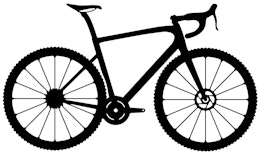
Bike type
Gravel
* informazione Publiredazionale

Texts
Giacomo Pellizzari

Photos
Paolo Penni Martelli
Cycled with us
Giulia Guanella, Giacomo Pellizzari
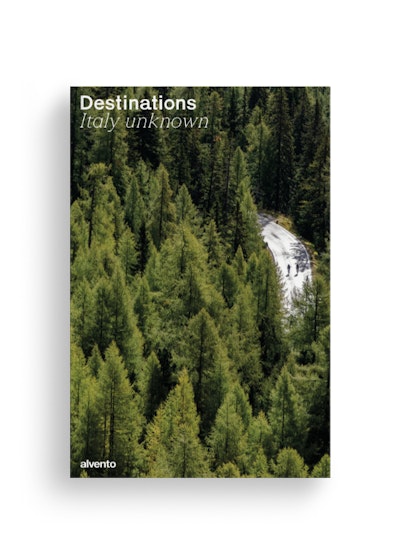
Questo itinerario lo puoi trovare sul super-magazine Destinations – Italy unknown / 1, lo speciale di alvento dedicato al bikepacking. 13 destinazioni poco battute o reinterpretazioni di mete ciclistiche famose.
